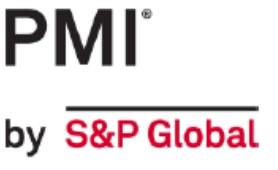Flash Purchasing Managers Index, June 2024: S&P Global, who produce most of the Purchasing Managers’ Index (PMI) reports, have published their flash estimates for June – these are usually based on about 85% of the final number of returns – although our publishing schedule means that the figures for the USA are not out until later this afternoon.
For the UK, the estimate suggests that the modest expansion of activity in the sector that was recorded in May has continued through June with the manufacturing PMI edging up to 51.4 (from 51.2 last month). This was largely due to a more significant increase in the pace of growth for output, which was at its fastest since April 2022, driven in turn by an improvement in new orders. However, this was entirely from the domestic market with export orders falling in the manufacturing sector.
Interestingly, the service sector expanded at its slowest pace for 7 months and there was also a higher rate of input cost growth as a result of severe global shipping constraints that increased transport costs again. However, the report, which covers both services and manufacturing (the final reports due on 10 days time are separate), does not mention the impact of suppliers’ delivery times.
The picture is rather different in the Euro-zone where the flash PMI estimate for the manufacturing sector slipped back to its lowest level since last December with the output element of the composite index down quite sharply. Although it had not managed to get above the 50 threshold, the index in the Euro-zone had been improving over the past few months, so this is a disappointing set of results. New orders for the sector also fell, with export demand especially weak and employment also contracted creating another drag on the overall index.
At this stage, we only have separate reports for France and Germany; both of these showed the manufacturing PMI weakening to a 2-month low as the decline in output accelerated again. The report for Germany also notes that there was a sharp fall in factory new orders, with export orders falling at the fastest pace since March. In France, although manufacturing orders are falling, the biggest change appears to have been in the service sector in the latest figures.
Manufacturing employment fell in both countries and for Germany this means that it has been negative for 12 consecutive months. As with the UK, input price inflation at French manufacturers quickened to a 17-month high, although this is attributed to increases for a range of raw materials including metals rather than the shipping situation; in contrast, input costs in Germany are reported to be declining.
Finally, there is a mixed picture in Asia with the already negative index in Australia slipping back to its lowest level since March at 47.5, while the reading for Japan also weakened while managing to remain just above the threshold at 50.1; in contrast to these, India, which has been the global leader for some time, saw the overall manufacturing PMI pick up to 58.5.
As well as the different outcomes, the path to these figures vary with a fall in output driving down the Australian figure, while an acceleration of growth in India led to its increase; for Japan, although the overall index slipped, the output element improved to show expansion for the first time in over a year, while orders suffered a modest contraction. New orders for manufacturers grew at a faster pace than in May in India but fell on the same comparison in Australia.
Our publishing schedule means that we don’t yet have the data for the USA but you will be able to get this, along with the other flash reports from the “PMI by S&P Global” website at https://www.pmi.spglobal.com/Public/Release/PressReleases or on request from MTA.

